Holidaymakers locked out: Menorca resort locks out tourists with chains in the picturesque alleys that attract 800,000 visitors a year to the village of 500 inhabitants in the latest anti-tourism move
Furious Menorcan residents living in a holiday resort known as ‘Spanish Mykonos’ have chained their streets together in their latest attempt to prevent holidaymakers from entering their private properties.
The nearly 200 homeowners of Binibeca Vell, located in the south of the island of Menorca, say they don’t want visitors before 11am and after 8pm because anti-tourist signs attached to thick rope and chains have been put up all over the holiday hotspot confirmed. .
Locals have long complained about rowdy tourists disrespecting their homes by climbing stairs, onto private balconies, and even entering doorways to locals’ homes as they look for perfect spots.
Famous for its whitewashed houses and winding alleys, Binibeca is home to just 500 permanent residents in the summer, but around 800,000 tourists arrive every year, wreaking havoc on the local population.
But recent images show the small town almost completely deserted, as several alleys have ropes and chains hanging between entrances and round signs indicating no intruders.
Binibeca Vell’s nearly 200 homeowners say they don’t want visitors before 11 a.m. and after 8 p.m.
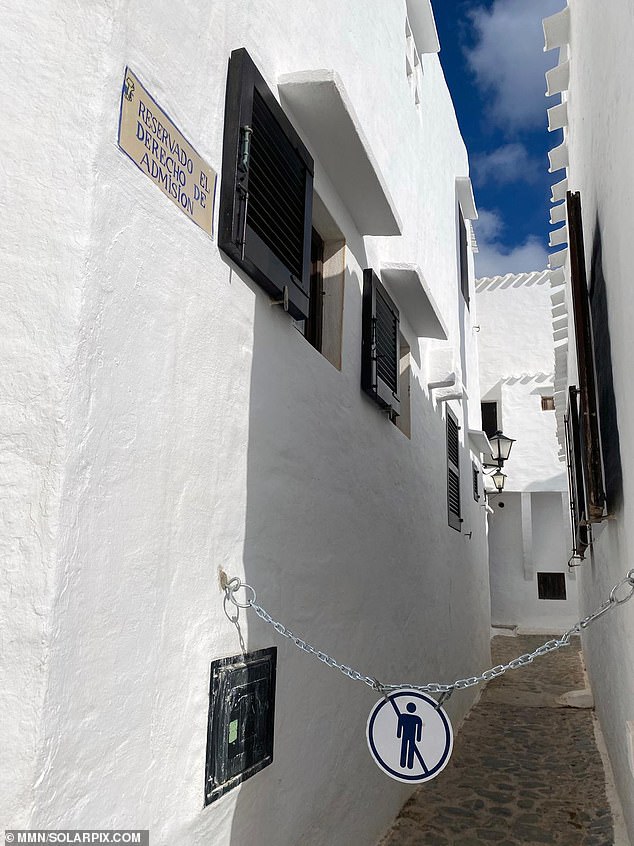
Known for its whitewashed houses and winding walkways, Binibeca is home to just 500 permanent residents in the summer
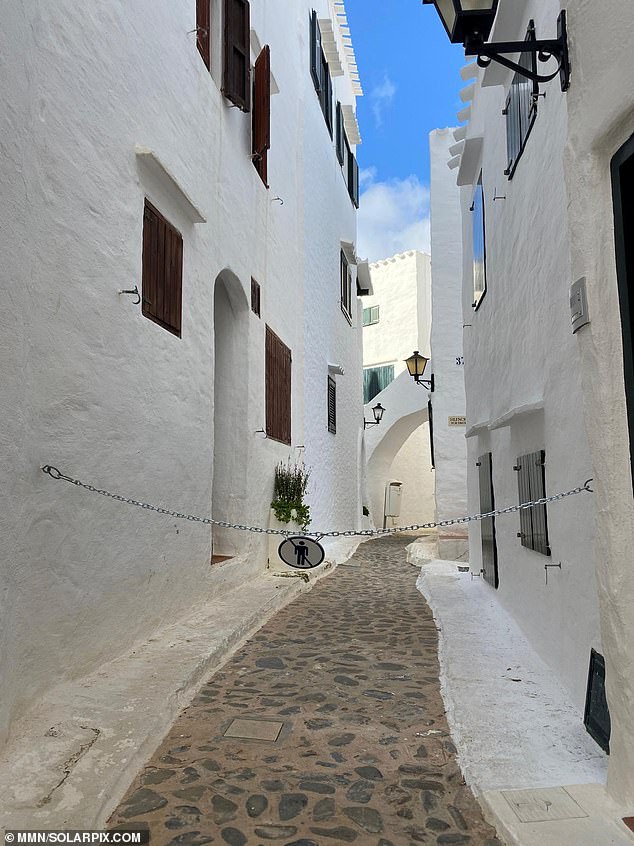
Nearly 800,000 people visit the city every year
The new blockades are Binibeca’s first anti-tourism measure before residents vote in August on whether to ban holidaymakers. The Telegraph reported.
Óscar Monge, president of the residents’ association, accused Menorca authorities of failing to regulate tourism in the area and letting locals take matters into their own hands.
He said: “Binibeca is promoted by the government and tourism companies, but what benefit do we get from it?
“We pay dearly because we are the most powerful tourist attraction in Menorca.”
The residents’ organization receives €25,000 annually to repair and update the exterior paintwork of the houses in the city, but Monge considers the amount insufficient and has demanded a plan to manage the area sustainably.
He said: ‘It is outrageous that the politicians who run local tourism are telling us that the only alternatives we have to keep the place clean are to close it, privatize it or start charging.’
In a message on Binibeca’s website, locals asked visitors to refrain from “entering houses” and “climbing balconies.”
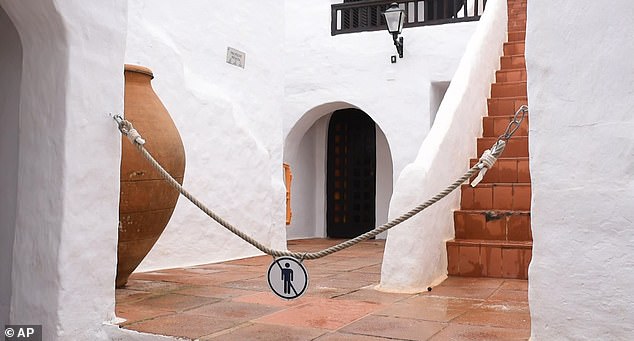
A popular Menorcan seaside resort known as ‘Spanish Mykonos’ has chained its streets together to prevent holidaymakers from crowding them while taking selfies
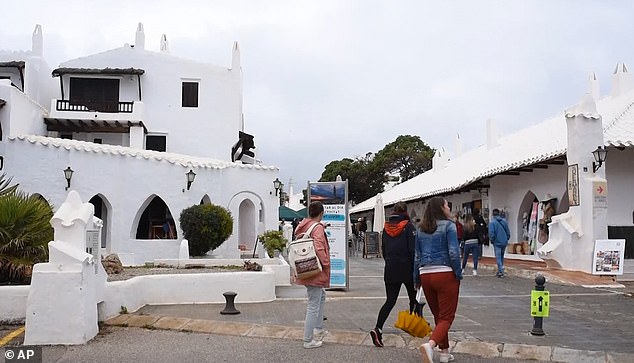
Binibeca Vell is a popular holiday destination for its winding alleys and whitewashed houses
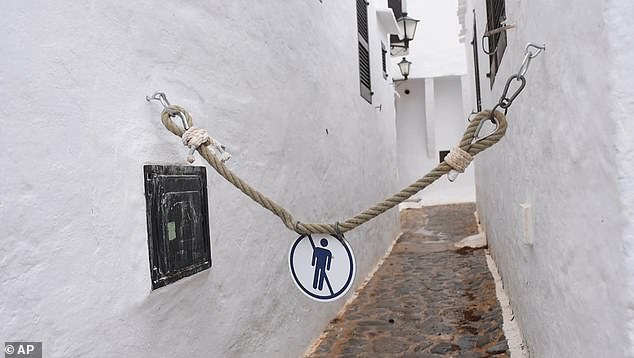
Angry locals have attached no-go signs to ropes and chains around the town to deter visitors
The message included a series of photos showing a tourist lying on a stairwell and another sitting on a chair belonging to one of the locals.
There are 1.2 million permanent residents in the Balearic Islands, home to Menorca, the smaller neighbor of the popular tourist destinations Mallorca and Ibiza.
In 2023, the islands saw approximately 18 million tourist arrivals, setting a record for the archipelago.
And 14.4 million of these were foreign visitors, the majority of whom were Germans and British.
It comes as Brits heading to Mallorca this Bank Holiday weekend faced major disruption as thousands of people took to the streets in anti-tourism protests.
The protests took place on Saturday evening, starting at 7pm, and were centered around the capital Palma.
Organizers said they were amazed at the number of groups and organizations that had pledged their support.
“Initially we thought there would be around 2,000 people, but now it will be significantly more,” said a spokesman for the organizing group, Banc de Temps de Sencelles.
Last week, a group under the slogan ‘Més turisme, menys vida’, which translates to ‘More tourism, less life’, said it planned to cause chaos at Palma airport this coming weekend.
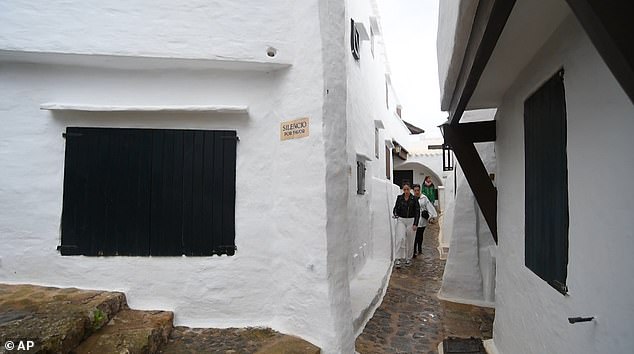
Recent images show the idyllic town almost completely deserted
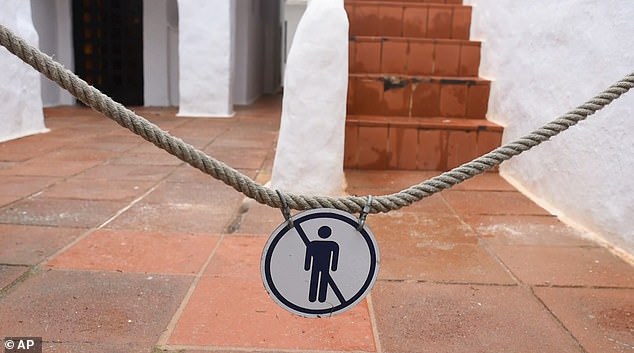
Óscar Monge, president of the residents’ association, accused Menorca authorities of failing to regulate tourism in the area and letting locals take matters into their own hands
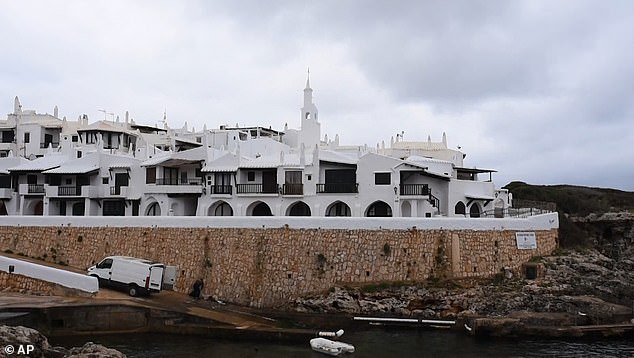
Binibeca is home to only 500 permanent residents in summer, but around 800,000 tourists flock to its pristine alleys every year
Mes calls for a reduction in the number of flights at Palma airport, saying: ‘Mallorca is no longer overpopulated, Mallorca is experiencing a collapse. You can’t have airports that break records year after year.”
The Balearic government says it is ready to change the tourism model and has started a round of talks with the public. No concrete measures have yet been agreed.
Banc de Temps de Sencelles has labeled its campaign ‘Mallorca is not for sale!’ and is so surprised by the promised support that she has asked the government to use more buses and trains so that people from all over the island can attend.
“The demonstration aims to highlight the problem of access to housing in Mallorca, a general problem, but not isolated, because it cannot be separated from tourist saturation, the purchase of properties by foreigners,” says Carme Reynés of Banc de Temps de Sencelles.
The group says the protest will be followed by “other actions” in the coming weeks.
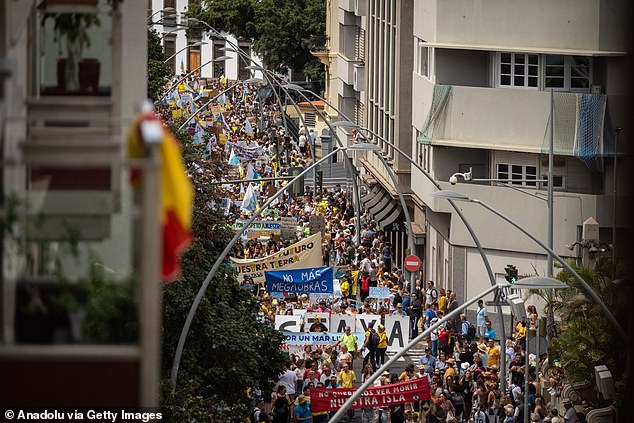
Protesters flooded the streets of Tenerife last month (pictured) calling on local authorities to temporarily limit visitor numbers to ease pressure on the island’s environment, infrastructure and housing stock, and to ban property purchases by foreigners restrict
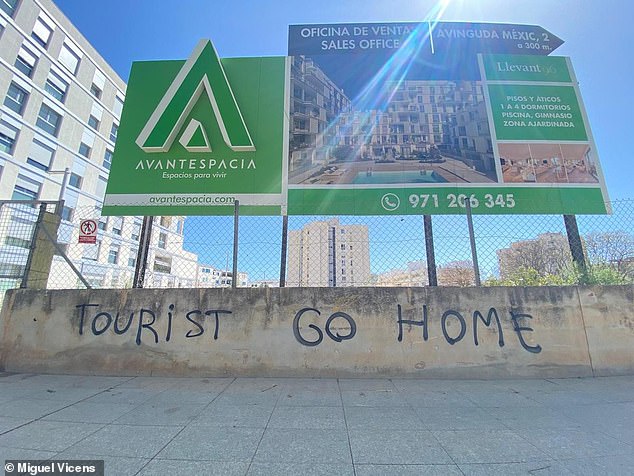
‘Tourist Go Home’ is scrawled in English on a wall beneath a property promotion billboard in Nou Llevant, Mallorca, a neighborhood that has seen a huge influx of foreign buyers in recent years. It is one of many examples of anti-tourist graffiti
The protests in Mallorca come after more than 50,000 people took to the streets of Tenerife in April to protest against tourism on the Canary Island.
Protesters were seen waving “you enjoy, we suffer” placards, claiming that the huge influx of tourists to the island is wreaking havoc on the environment, driving down wages and pushing locals out of cheap, affordable housing, leaving dozens people are forced to live in tents and cars. .
British visitors to Tenerife will also face a controversial ‘tourist tax’ from next year, local authorities recently confirmed.
The proposal is part of the island’s new tourism strategy and is seen as an eco-tax, but parliament still needs to agree on the amount of the levy and the formalities.
It will apply to all of Tenerife’s famous protected sites, including Mount Teide volcano and several rural parks and hamlets such as Masca.
A Tenerife Government spokesperson said the introduction of this eco-tax was necessary due to the huge increase in the number of people visiting protected areas, both visitors and locals.
Travelers aged 16 and over already pay a daily surcharge of up to €4 (£3.45) when visiting the equally popular Balearic Islands such as Mallorca, Menorca and Ibiza.
